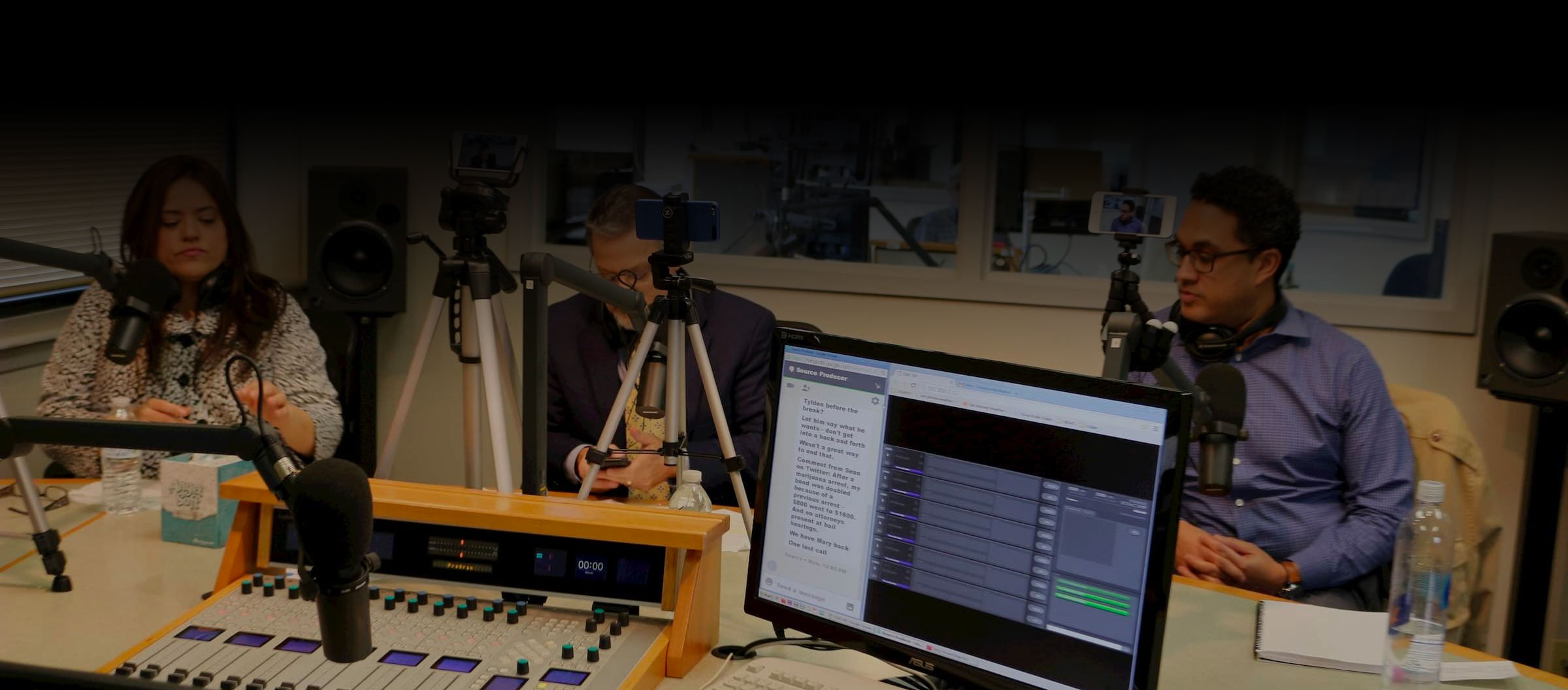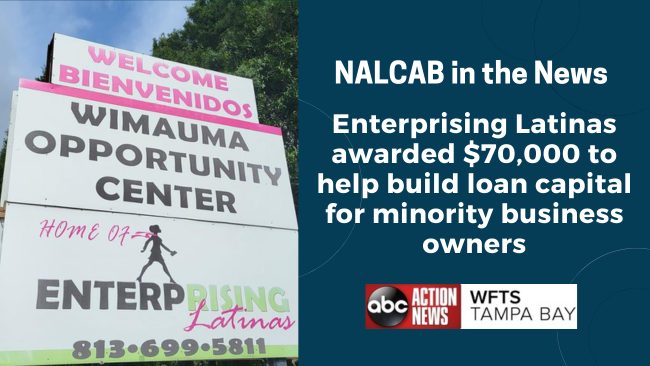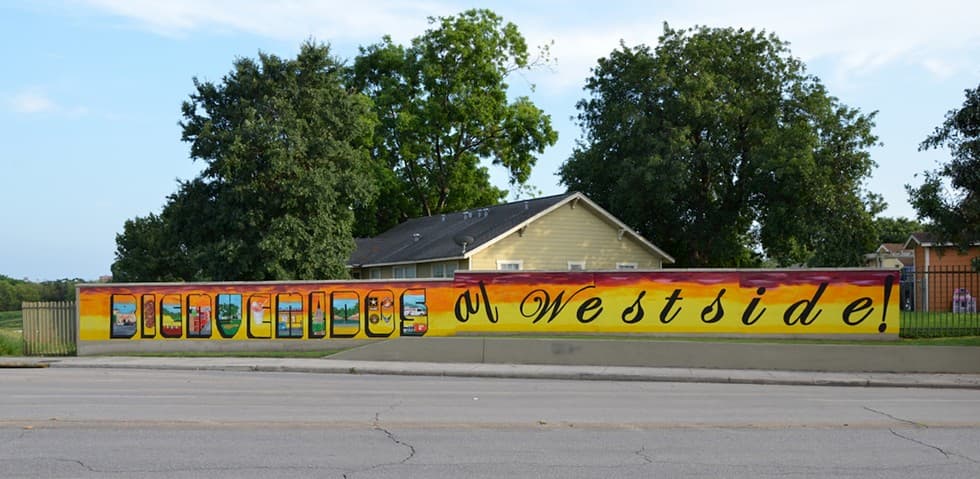
Chris Benavidez and Sheila Hyde, a retired couple who, in 2017, bought and rehabbed a craftsman-style house on West Houston Street, a few blocks from the Bexar County Adult Detention Center, welcome the wave of development that’s expected to enter the near West Side in coming years.
After retiring recently — he from the U.S. Navy, she from teaching — the couple settled on San Antonio’s West Side for its affordability after spending many years in Seattle, Washington. Benavidez said some of the same growth patterns he saw in the Pacific Northwest are also taking shape in the Alamo City.
“You’re starting to see a lot of that coming here — a lot of these houses are pending under contract,” said Benavidez, 49. “It’s catching on.”
He welcomes the reinvestment and hopes it will help address some of the area’s issues, such as transient foot traffic.
But with development comes a downside. Some community members are concerned about the potential for mass displacement caused by rising property values, predatory practices by investors and code violation enforcements in a part of San Antonio many people consider the cultural heartbeat of the city.
If the West Side gets gentrified, what’s left?
Perhaps the most profound sign of the coming change is the University of Texas at San Antonio’s plan to quadruple the size of its downtown campus over the next 10 years.
But it’s not just UTSA expanding into the West Side. The San Antonio Housing Authority (SAHA) intends to build two mixed-income housing developments in the area near the Alazan Courts, the circa-1939 housing projects west of Alazan Creek, between Guadalupe Street and César E. Chávez Boulevard.
A mile north of the courts, closer to downtown, VIA Metropolitan Transit plans to rehab the abandoned Scobey industrial complex, just east of the detention center, into a mixed-use housing and office development.
Smaller projects are in the works, as well. Nonprofit developer Alamo Community Group wants to build a 160-unit, four-story affordable housing complex at 811 W. Houston St., a cluster of older and modern structures the group recently purchased from the Alamo Colleges District.
On the other side of Interstate 35, in downtown proper, the activity is more immediate. Weston Urban is co-developing the 23-story Frost Tower, expected to open next month. The developer is also obligated — under the agreement between Weston Urban, Frost Bank and the city of San Antonio that enabled the project — to build 265 housing units on properties it owns in the area.
GrayStreet Partners, another local developer active in the downtown area, recently purchased properties on North Flores Street, including the Cadillac Bar and the row of buildings anchored by the former Kallison’s Western Wear store.

Not everyone is as optimistic about the imminent growth as new residents Benavidez and Hyde.
Kristel Puente, a UTSA student who on Sunday earned a bachelor’s degree in Mexican-American studies, said the university has offered little to no details on how it’s going to engage with the West Side community.
“They always say … ‘We’re going to expand cultural programs. We want to honor these neighborhoods,’ ” said Puente, who’s a member of the Mexican American Studies Student Organization, or MASSO, at UTSA. “But they never give you a detailed or strategic plan of how they’re going to do that.”
Puente attended a recent community meeting on the school’s expansion. She said the gathering became heated because the format prohibited vocal feedback and community members felt they weren’t being heard. If UTSA was serious about including the West Side community in its plans, she argued, the institution would have done so before it made its announcement last September.
“It’s not that we’re against the growth or changes or education,” she said. “It’s just we want them to understand the history [of the West Side] and to do better, and they can.”
If the scenario sounds familiar, that’s because San Antonio’s been seeing it play out on the East Side for several years now, said Christine Drennon, an urban studies professor at Trinity University.
“If we don’t start to control the process on the West Side, the result will be the same,” she said. “You’ll see long-term residents pushed out and replaced by higher-income, better-educated residents, mostly from a different ethnic group.”
However, there’s a key difference between the two areas, Drennon points out. While the gentrification on the East Side initially included purchases of stately homes capable of becoming showpieces with some restoration and upkeep, the historically Hispanic West Side is largely composed of smaller homes with lower resale value.
Much of the near West Side’s housing stock is appraised between $40,000 and $70,000, according to Drennon. So, once gentrification takes root, it will be displacing residents from one of inner San Antonio’s last pools of affordable single-family housing.
Mayor Ron Nirenberg acknowledged that if the city is going to avert such a wave, it must act now. He pointed to the work of his Housing Policy Task Force, which has prioritized efforts to tackle displacement, gentrification and escalating property taxes.
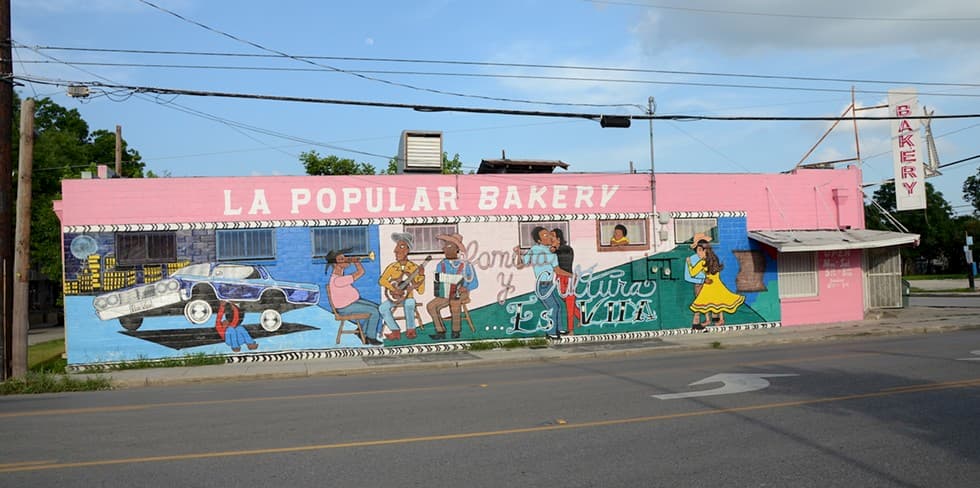
In March, the City Council approved a $1 million fund to assist residents on the cusp of displacement — or, who are currently being displaced — because of rising rents or unexpected costs. So far, 118 people have been served — more than half of the total anticipated. The city is also looking to designate the near West Side and two East Side communities as neighborhood empowerment zones under a Texas statute that freezes city property taxes for homeowners for up to 10 years.
“We’re on the cusp of widespread displacement, which is why we accelerated our displacement prevention policies and implemented our mitigation tool,” Nirenberg said.
Still, critics worry whether the city’s moving fast enough on those efforts. West Side property owners are already receiving offers from developers, often willing to buy their houses as-is.
Kristi Villanueva, president of the West San Antonio Chamber of Commerce, said she’s worried many residents will receive lowball offers for their homes or small business properties and jump at the first they receive.
“Everyone’s being approached with offers, but the developers are basing them on the listing price that these folks paid for their property 10 or 15 years ago,” she said. “If people aren’t educated about their options, they may think they’re getting a good deal.”
Few projects slated for the West Side are likely to have as much short-term impact as the planned expansion of UTSA’s downtown campus. The City and Bexar County have sold five acres closer to downtown, three blocks east of the main campus, to the university. The parcel — within the boundaries of Dolorosa, South Flores and West Nueva streets and South Santa Rosa Avenue — will house a $57 million school of data science and a $33 million national security collaboration center.
The UT System’s board of regents has committed the $70 million to fund the projects, while Rackspace co-founder and downtown developer Graham Weston has kicked in an additional $15 million for the school of data science.
But the project doesn’t end there.
UTSA is also waiting for $126 million in tuition revenue bonds from the Texas Legislature to build a college of business on the parcel. Future plans are also likely to include residential developments for students, faculty and staff.
The university has been gathering input from students, parents, faculty, staff, alumni and community members for its downtown master plan since last year. However, the meeting held May 6 at Guadalupe Theater to discuss the expansion was the only second community meeting this year. Roughly 60 people attended.
“It was evident in the master plan process that residents want a two-way conversation,” said Veronica Mendez, UTSA’s vice president of business affairs. “And, as a university, that’s something we’re good at facilitating.”
But some West Side activists like Graciela Sanchez, director of the Esperanza Peace and Justice Center, are frustrated by the process. Sanchez attended the May 6 meeting and said attendees questioned how the university was going to prevent displacement in the West Side.
“There’s more to the university expansion than just to be able to see their architectural designs,” Sanchez said. “We’re talking about gentrification and displacement that will take place after they [build it].”
She said she’d like to see how UTSA will prevent the uprooting of long-time residents, but the university seems to have pushed that responsibility to the city.
“You’re watching a volleyball or tennis match, but you’re the ball going back and forth,” Sanchez said. “So you feel overwhelmed by how you’re being tossed around and getting nothing.”
Still, Sanchez acknowledged that some UTSA administrators have been listening to concerns from West Side residents and activists. The Esperanza Center and MASSO, the student group, met with UTSA president Taylor Eighmy last November and aired concerns about the expansion.
“Back in the ’70s, when [UTSA] wrote up their initial vision statement, it did talk about the history and culture of [the West Side], so how are they building those programs within this school?” Sanchez asked.
“If it’s a Hispanic-serving institution, or people of color-serving institution, what are we doing to help strengthen that?” Sanchez continued. “Without a sense of what they’re doing downtown, it makes us very anxious, nervous and many people angry.”
It’s because of these concerns from the West Side community that the city is requiring UTSA to conduct an economic and social impact study before it considers selling 19 acres of land west of the campus to the university, Assistant City Manager Lori Houston said. In the latter phases of its 10-year plan, UTSA expects to build academic buildings and student housing on the land that’s currently home to the Frank D. Wing Municipal Court Building, a police substation and a fleet maintenance center.
“We’ve always been aware of the concerns the West Side community has regarding the displacement and gentrification of the neighborhoods,” Houston said. “That’s exactly why we made the requirement in the contract with UTSA that they prepare an impact study.”
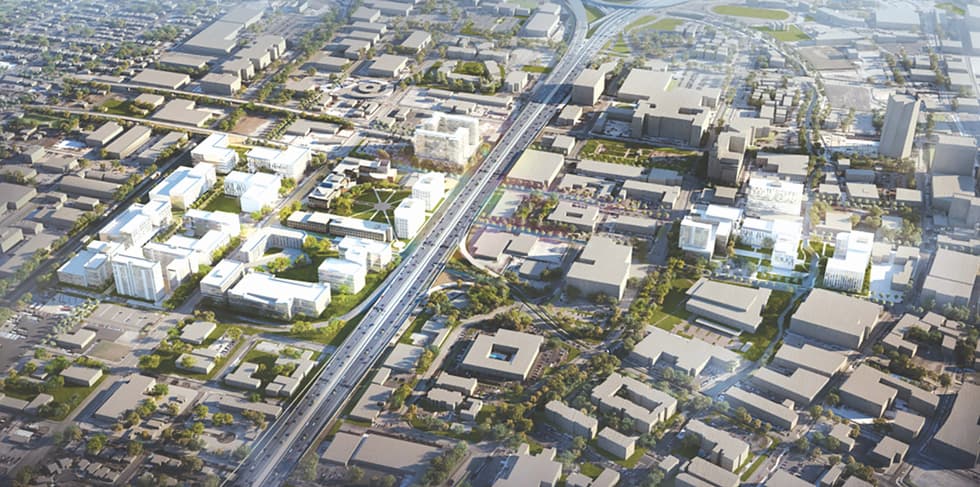
UTSA has hired the National Association for Latino Community Asset Builders (NALCAB), a nationally recognized nonprofit focused on supporting equitable neighborhood development, to conduct the study. If that name sounds familiar, it might be because NALCAB recently conducted research and technical support for the Mayor’s Housing Policy Task Force and also completed an assessment of San Antonio’s most vulnerable communities.
The initial findings of NALCAB’s study should be available by late summer, UTSA’s Mendez said.
“I think that in three months or so we’ll see something actionable,” she added.
Armed with NALCAB’s research, the university will begin facilitating conversations with residents about how to minimize displacement.
The university’s master plan already calls for the new development to interface seamlessly with surrounding neighborhoods and celebrate their history and culture, Mendez points out. Buena Vista Street, in particular, would have a pedestrian bridge that runs level with the vehicular bridge that connects downtown with the West Side. There also looks to be an elevated park that hangs over a Frio Street-level promenade and basketball courts outside a recreation and wellness center that presumably would be available to West Side residents.
Further, the school could choose to locate future projects such as business incubator or student-aid office on the West Side to strengthen its ties to the neighborhoods, Mendez added.
NALCAB Executive Director Noel Poyo said institutions tend to put their heads in the sand when it comes to acknowledging the downside of their growth. He commended UTSA for its willingness to conduct the study.
Poyo added that the gentrification of Southtown, Dignowity Hill, Five Points and other near-downtown neighborhoods is proof the same is coming to the West Side. The time to address displacement is now, he added, not after the damage has already been done.
“There’s no such thing as stopping the market. Try damming a river with sticks; it’s hard,” said Poyo. “But what we can do is shape it and slow it.”
Last week, UTSA administrators and Weston Urban reps, including Weston himself, visited Arizona State University’s campus in downtown Phoenix to meet with university officials about what works, and what doesn’t, in an urban campus setting.
The relationship between UTSA and Weston Urban is one that’s newly formed.
A few years ago, when Weston Urban began purchasing land in west downtown, the developer’s strategy was to continue to unilaterally build around tech incubator Geekdom, using its other holdings.
The strategy changed last year, however, when UTSA’s Eighmy announced the university was expanding the center city campus, which has stayed west of I-35 since it opened in 1997.
“A year or so ago, along comes Dr. Eighmy, and we sort of said to ourselves, ‘This is the collaborator we’re been waiting for,’ ” said Randy Smith, president of Weston Urban.
Now, Weston Urban wants to create a “tight-knit fabric” between its downtown portfolio, mostly located in the desolate western half of downtown, with UTSA’s growth in the same area. And Weston Urban continues to grow, having recently purchased a vacant two-story office building on Dolorosa, next to the land where UTSA’s new buildings are going, and the old Toudouze market property at 700 W. Houston St., for future development.
“Obviously we’re not in the education-space business, but we think there are a lot of things we can do and develop in partnership with the university, community and others that will foster the kind of mixed-use environment that students will get excited about,” Smith said.
Smith said the company is aware of concerns about the western part of downtown and near West Side areas becoming unaffordable to residents.
“I think going forward you’ll see a mix of price points and product types, and local and regional and national operators,” he said.
Developer David Adelman and business partner Barlcay Anthony, CEO of Sea Island Shrimp House, own some buildings a block north of UTSA’s campus, next to VIA’s Centro Plaza transit hub. Those include the former Cattleman’s Square Tavern and the building that’s home to nonprofit Avance. The duo want to build a mix of office, retail and housing on the site.
Adelman sees UTSA’s ambitious plan doing more good than harm to the near West Side by providing higher education options to the community.
“When people are educated, their health improves, their need for social services declines,” he said. “You just want as many people educated [as possible]. I think the downtown campus offers a lifestyle element that has been lacking for a long time, and as we fill it in with people, that creates a livable place for people to say, ‘Hey, I enjoyed my time here at college and I want to stay.’”
Adelman also has strong feelings about the need for reinvestment in neglected communities, whether it comes from a public institution such as UTSA, or the private sector, or both.
“Often if a neighborhood is experiencing disinvestment, declining property values, declining school districts, that’s just bad for our community as a whole,” said Adelman. “If you have reinvestment, I think that’s, on the net, positive. What comes with it is a little bit of gentrification. I actually think a little bit of gentrification is good.”
“If you’re a property owner and you have a neighborhood that’s experiencing reinvestment, that’s good for you,” he added. “But people who are most negatively affected are renters. So I’ve always been in favor of having a displacement strategy to make that a smoother process. … But you know, when you’re born, there’s no constitutional right to live anywhere other than you have an opportunity to buy or rent anywhere where you want.”
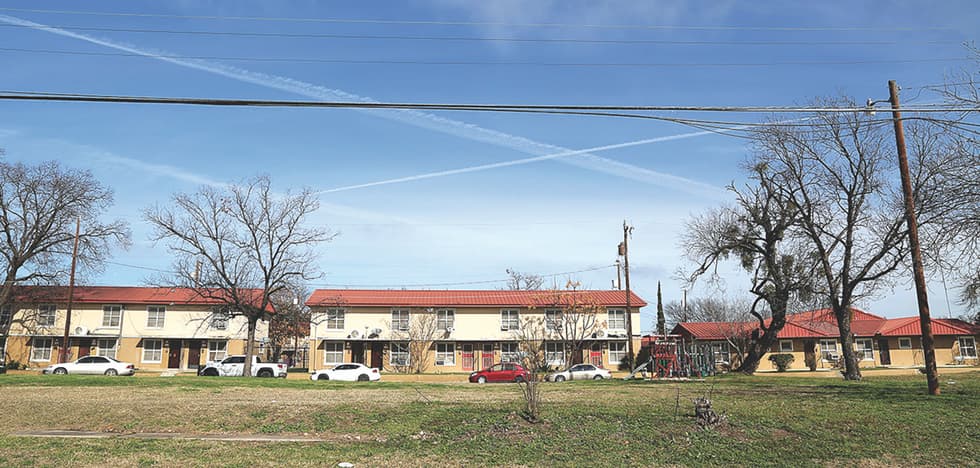
Next to the Alazan Courts, on vacant land, SAHA plans to build the Alazan Lofts, an 88-unit mixed-income apartment development — 40 units would be public housing, 40 a mix of low-income units and eight market-rate.
SAHA also is partnering with 210 Development Group on an apartment project a half-mile south of the courts called the Tampico Lofts. Half of those units would be market-rate and the other half rented to people making 80% of the area median income, which is $53,440 for a family of four in the greater San Antonio area, according to the U.S. Department of Housing and Urban Development.
SAHA’s plan: Empty the cinder-block buildings by moving Alazan residents into the newer digs, then demolish the aging courts building-by-building over the course of many years.
Some preservation groups, including the Westside Preservation Alliance (WPA), see SAHA’s strategy as one of displacement — forcing people to leave their homes while simultaneously introducing housing for higher-income households.
SAHA disputes that notion.
“We’’re not trying to relocate anybody,” said Lorraine Robles, SAHA’s director of Development Services and Neighborhood. “This is an opportunity for individuals living in Alazan [Courts] to be able to have an opportunity to get a new unit.”
Tim Alcott, SAHA’s real estate and legal services officer, said Alazan Courts residents will be given options, such as Section 8 vouchers, which would allow them to move to more prosperous parts of town.
The WPA would rather the courts be preserved and improved, keeping the community intact.
“We argue and advocate for its rehabilitation and not for its demolition,” said Antonia Castañeda, a local historian and member of the WPA, at an alliance meeting earlier this year.
But SAHA officials said it would be more costly to renovate the 1939 structures than it would be to build anew.
SAHA’s strategy brings up larger questions about whether introducing market-rate apartments into a severely impoverished community is the right play, or whether the community is just fine on its own, simply needing some upgrades here and there.
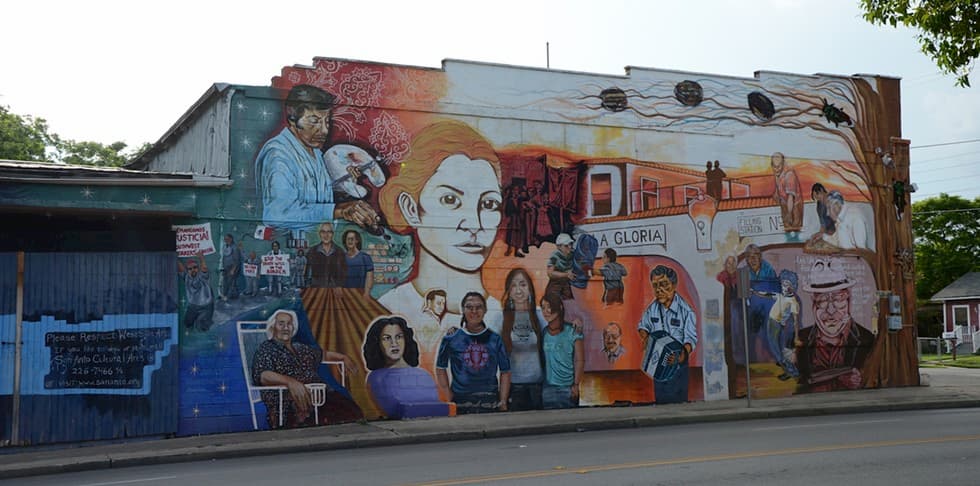
To truly understand the complexity of the plan, one must look east.
Five years ago, SAHA forced out the residents of the Wheatley Courts on the East Side to make room for the mixed-income East Meadows development, which was spearheaded by a $30 million Choice Neighborhood grant. SAHA officials took issue with some of those who characterized the plan as a displacement.
Each household was given the much-coveted Section 8 housing voucher, and the option to move back into the newly built apartments. Less than a quarter actually moved back.
But Trinity’s Drennon cautions that even good intentions can result in widespread displacement.
She points to the Westside Creeks Restoration Project, which is working to restore a quartet of streams running through the near West Side. The San Antonio River Authority-led project will bring better flood control while beautifying surrounding neighborhoods. But those will come at a price to local homeowners, Drennon said.
“It’s going to be so beautiful, but at the same time, it’s going to increase people’s property values,” she said. “If we do nothing to address that, the question becomes, ‘Are we more comfortable with beautiful creeks or with the displacement of people?’”
Much of the problem, Drennon argues, comes down to the city’s historic neglect of the West Side — especially its schools. When underfunded campuses turn out few students ready for higher education or prepared to take the skilled jobs that offer upward mobility, the surrounding area is unlikely to thrive.
“If wages kept up, the residents would have been able to invest in their own homes,” Drennon said. “Yes, we need to invest in our places, but we also need to invest in our people.”
District 5 Councilwoman Shirley Gonzales said she’s concerned about gentrification but points out that a different kind of displacement is already happening in the West Side neighborhoods she represents.
Low-income residents are often unable to pay for upkeep on their homes and have faced obstacles getting loans from banks. Gonzales is aware of at least four constituents that have recently become homeless because their residences are no longer livable. Representatives of the Esperanza Center say West Side residents regularly approach them with the same issue.
“The risk we have today is people losing their homes, not because of gentrification but because their homes are in such disrepair that they can’t live in them anymore,” said Gonzales, who initiated several city initiatives to help residents stay in their houses.
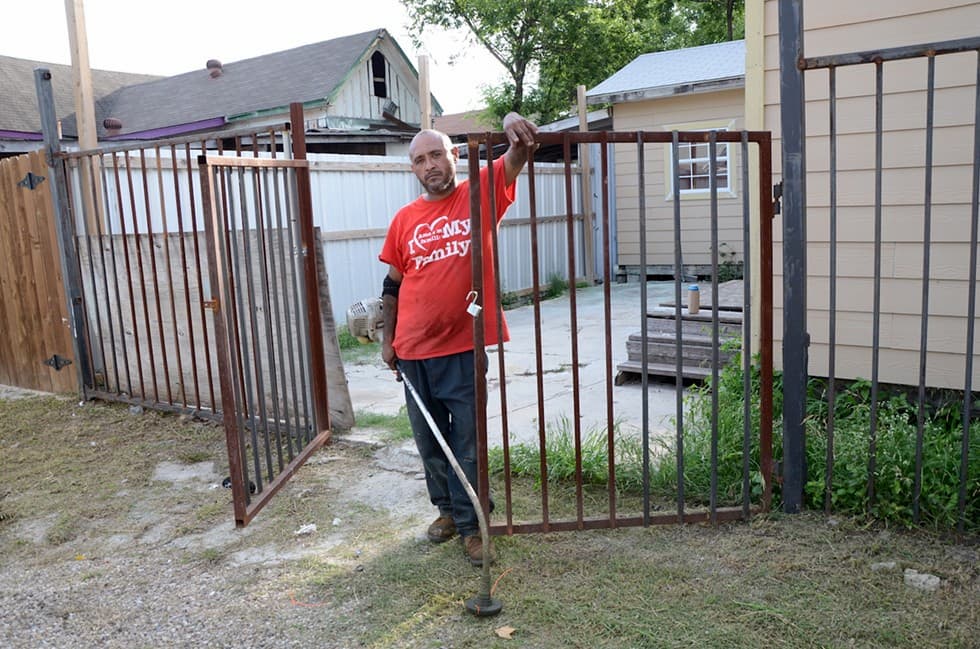
Gonzales said she favors a smart and measured approach to new capital flowing into her district, adding that some of the loudest voices calling for a slowdown of West Side development are coming from people who don’t live in the district.
“With UTSA’s announcement people can finally see some degree of development, but for the six years I’ve been in office, we really haven’t had any at all,” she added. “It’s been the 1970s since there was much new development here. So, we’re desperate for new structures, for new investment. We need jobs.”
Esperanza’s Sanchez wants to see a reduction in code enforcement officers in District 5, largely the near West Side, and the culture of code enforcement changed from acting as a “police force” to something more like social workers.
“I know that we’re not a police force,” said Michael Shannon, director of Development Services, which oversees code enforcement in the city. “But we have a job to do, which is to help maintain the health and safety codes of those neighborhoods.”
Shannon said before 2012, about 80% percent of code enforcement cases were from people who reported violations, with the other 20% percent of cases from officers finding violations while on patrol. Those percentages are now reversed, he said.
From October 1, 2017 to September 30, 2018, District 5 had 14,143 code enforcement cases, the third highest in the city behind the East Side’s District 2, which had 15,797 cases, and District 1, which had 18,690. Nearly 12,000 of the code enforcement cases in District 5 were initiated by patrolling officers.
Additionally, 30 homes were demolished in District 5 that fiscal year, the highest of any district.
Development Services offers to help residents who can’t afford repairs or fines with the Compliance Assistance Fund. When a fine is paid, Development Services takes $20 and puts it into the fund. However, the fund is nearly dry, according to officials, because it was used to help four Southeast San Antonio residents last year. Less than $20,000 was in the fund, and a maximum of $5,000 can be dispersed to a single resident.
Through the 311 app, anyone can report code enforcement violations or submit service requests. Shannon said most of those reports are made anonymously. When asked if developers could use the app to report on properties or land they’re interested in purchasing, Shannon said it was a concern he’s heard, but hasn’t seen the evidence.
“We don’t want anyone utilizing services in a negative manner,” said Shannon, “in terms of possibly forcing people out of their homes or property.”
The city seems to have acknowledged — somewhat — the frequency of code enforcement violations being levied on people who can’t afford the fines. Shannon says code enforcement officers are now trained “to have their radar up,” for residents who are struggling financially or medically and likely can’t fix their properties or pay fines. Code enforcement officers can tell Development Services they’ve encountered a struggling resident, then the department can refer the resident to Neighborhood and Housing Services Department (NHSD) for help.
Regardless of the help available, Villanueva of the West San Antonio Chamber said many residents are distrustful of a city they feel has neglected their neighborhoods for so long. Connecting those people with programs to avoid displacement will require serious outreach — perhaps even blockwalking efforts.
“The frustration from the neighborhoods is becoming very severe,” Villanueva said. “They don’t know who to turn to.”
Click here for more details.
Related Posts
August 07, 2024 at 10:48 am
(ABC ACTION NEWS WFTS TAMPA BAY) Enterprising Lati ...Posted by Hallie Chavez
...
July 19, 2024 at 09:41 am
(REUTERS) Capital One pledges $265 billion in lend ...Posted by Hallie Chavez
...
June 17, 2024 at 02:10 pm
(SHELTERFORCE) Are Race-Based Lawsuits Affecting C ...Posted by Hallie Chavez
...
January 18, 2024 at 07:54 pm
(THE PLAYFUL PODCAST) Building Community Wealth On ...Posted by Nidia Alvarado
...



